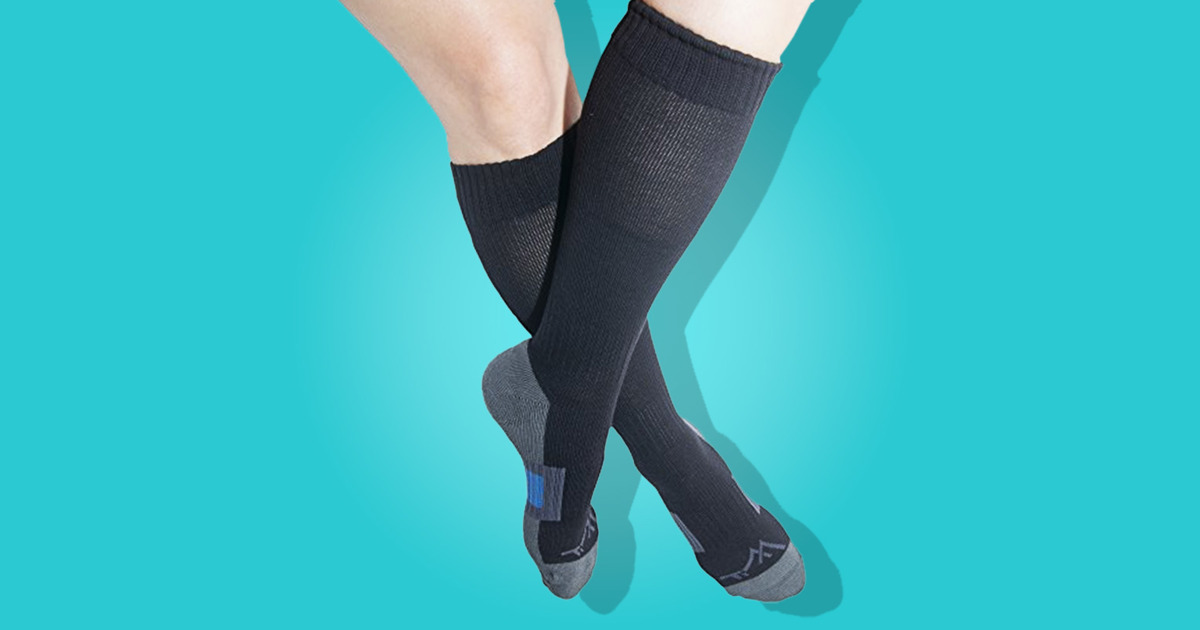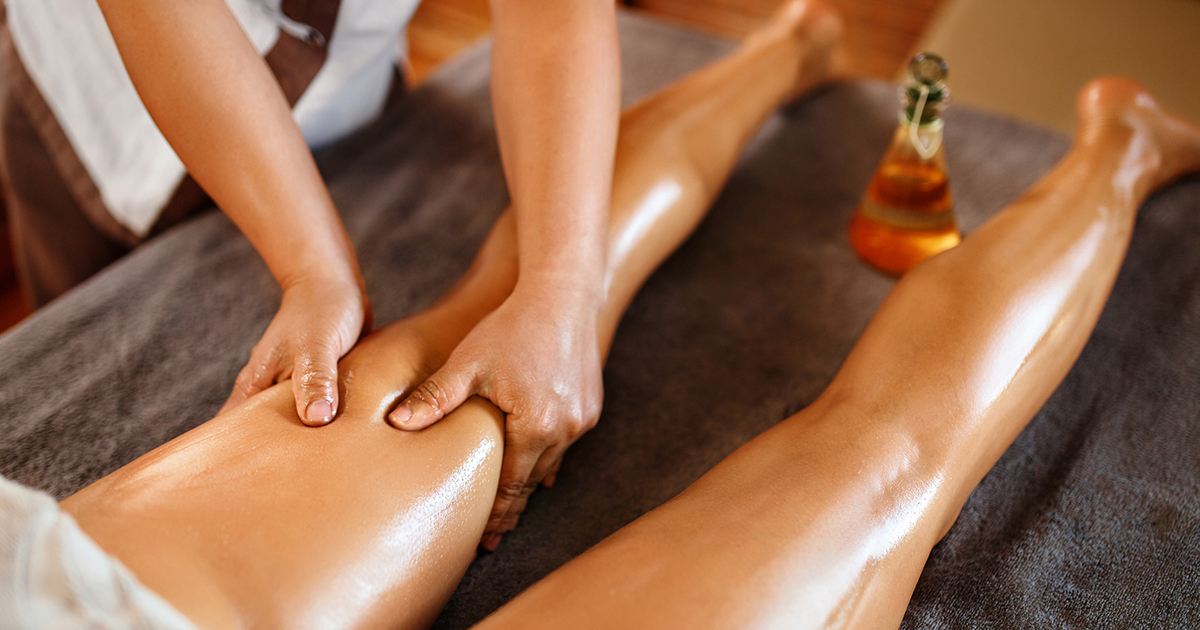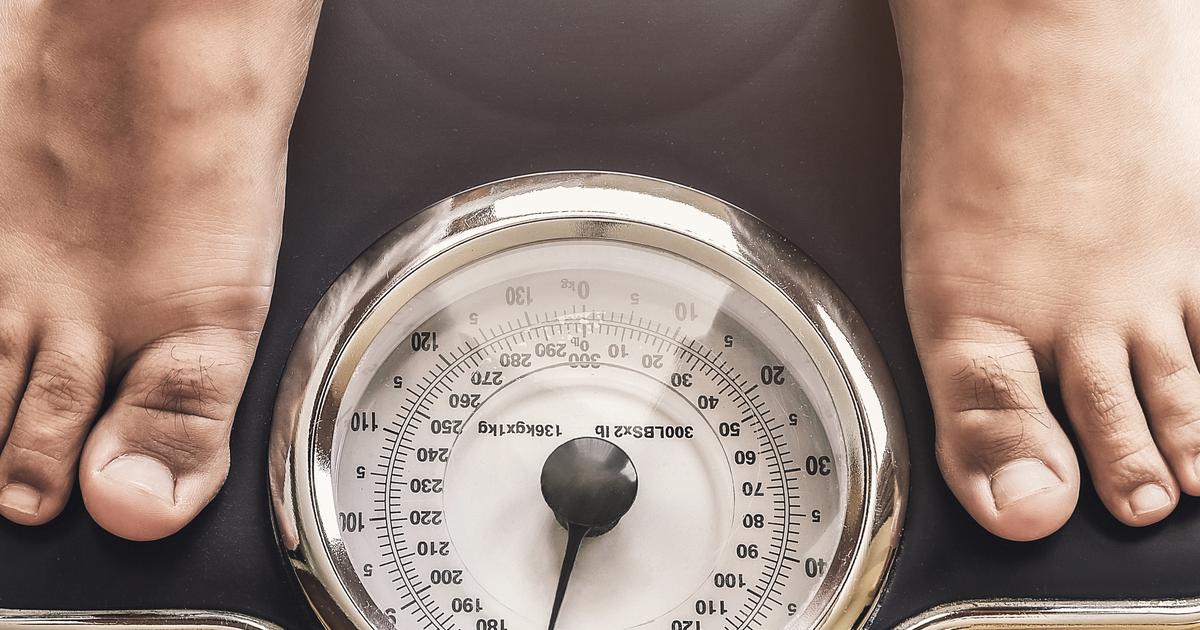How To Treat And Prevent Tired, Aching Legs Fast
Thankfully, for individuals who find their days limited by tired, aching legs, there are steps they can take to reduce discomfort. Whether an individual stands all day, works in an office, or has a physically demanding job that requires a lot of motion, dealing with leg pain can be a tiresome challenge. When legs are tired and achy, it can affect posture, which can, in turn, damage spinal health. If blood is pooling in the veins, an individual's heart is working harder than it has to. Finally, leg pain can lead to poor sleep, which impacts every area of physical health as well as the brain. Depending on the cause, how individuals treat their legs early in the day can impact how they feel at the end of the day, the overall health of their feet and legs long-term, and the quality of rest they get to enjoy. There are several options individuals can use to protect and support their legs from the time they get out of bed. These steps can help reduce pain from tired, aching legs as the day goes on and to have a more restful sleep. Learn about them now.
Compression Socks

Compression socks are a great preventive measure individuals can take at the start of the day to reduce the risk of leg pain. How do they work? Compression socks and sleeves function by supporting blood flow back to the heart. In fact, many athletes use them during warm-ups to help support blood flow until their heart rate is elevated.
It's critical to invest in compression socks of the right size and length. Individuals never want to fold or roll the socks, as this can actually pinch off the blood flow they're trying to support. To put them on, individuals should roll them down until they can place their foot comfortably in the sock, then roll it smoothly up their leg. If blood pooling conditions, such as varicose veins, contribute to leg pain, compression socks can help.
Take Breaks

Drinking water before feeling thirsty is the best possible way to prevent dehydration. This is similar to taking breaks before tired, aching legs occur. It's the best way to prevent the pain from occurring in the first place! If an individual stands all day as a bank teller or store clerk, they should try to change the way they stand, or sit for a little while, so their muscles aren't under the same strain all the time. There are several isometric exercises individuals can do at their workstation to avoid blood pooling, fatigue, and pain. Individuals who stand all day face more challenges than just leg pain. As their feet and legs get tired and sore, they may change positions and unintentionally put unhealthy pressure on their spine. Thus, individuals should change their body position frequently to avoid this unhealthy activity.
While it's essential for individuals who stand all day to take breaks and sit or lounge with their feet elevated, those who sit all day also need to take breaks. Think of a break as a change. If an individual has to sit for four hours to get the job done, they should spend their lunch break walking to get blood moving.
Elevate The Legs

If individuals find they struggle with swelling or varicose vein pain at the end of the day, finding time to elevate their legs during the day can help. If an individual stands all day at their job, finding a place to sit down and put their feet up can be a challenge. However, if they can find an empty office or a quiet conference room, they can do a pose called Legs Up The Wall. Just as it sounds, in this pose, individuals lay with their butt close to the wall and their legs up on the wall with their heels touching the wall. This pose reduces swelling and blood pooling in the legs and can reduce spinal pressure, especially if tired legs are leading to poor posture. Individuals may also choose to elevate their legs while they sleep. Raising the legs six to twelve inches above the heart while sleeping can greatly reduce varicose vein pain and cut down on swelling throughout the day.
Heated Massage

Heated massage is an excellent treatment for any pain individuals may be suffering, from legs to neck. If individuals don't have time for a massage, they can still enjoy similar benefits by taking a hot bath and massaging their feet and legs once they've warmed up and relaxed. This is also an ideal time to examine the feet and legs, particularly if individuals suffer from any circulatory problems or diabetes. Any limitations to the circulatory system can do great damage to extremities over time. It's not hard for an individual to observe their hands, but studying their feet takes more diligence.
Individuals should always take time to check the condition of their skin. They should note the health of their nail beds for any darkening, and, if possible, get a good look at the bottoms of their feet for any cuts or abrasions that are slow to heal. While massaging their feet and legs, individuals should be sure to moisturize their skin to protect themselves from damage caused by dryness.
Epsom Salt Bath

An Epsom salt bath is a great way to provide tired, aching legs with both a hot soak and a boost of magnesium, which relive the pain. By introducing magnesium into the body via absorption, individuals can help the body flush out toxins, better absorb the vitamins and minerals they ingest, and regulate the nervous system.
Individuals struggling with neuropathy from illnesses such as diabetes must take special care when bathing their feet and legs in Epsom salt. Hot water may feel great on tired and aching legs, but individuals should use extreme caution with the water temperature. Instead, individuals should start with warm water to avoid damaging their skin and nail beds.
Take Over-The-Counter Pain Medication

Over-the-counter pain medication may be effective for the treatment of mild to moderate leg pain. Ibuprofen, acetaminophen, and naproxen are a few of the over-the-counter medicines patients could consider. Some patients find acetaminophen works best for their symptoms, and others prefer to use ibuprofen or naproxen. When selecting an over-the-counter pain reliever, patients should always consider their general health status. Individuals with cardiovascular disease, high blood pressure, diabetes, liver issues, or kidney disease should always ask a doctor about which over-the-counter medicines are safe for their needs. Patients who take other over-the-counter or prescription medicines might also want to ask their doctor or pharmacist about potential drug interactions. If leg aches continue after seven days of treatment with over-the-counter pain relievers, the patient should see their doctor for an evaluation. Emergency medical care should be obtained if the patient's aching legs are accompanied by fever, leg swelling, or skin redness.
Stretch Legs Carefully

To prevent leg cramps and aches from developing, patients may want to try to stretch their legs. Some individuals find it is beneficial to perform careful stretches before starting a workout. Calf and hamstring stretches are often advised. The patient should stand behind a chair and place their hands on top of it for balance when performing a calf stretch. Next, the patient should rise onto their tiptoes for a few seconds. This exercise can be repeated a few times if it feels comfortable. Hamstring stretches are performed with the patient in a seated position on the floor. One leg is to be outstretched, and the other leg should be bent. This allows the foot of that leg to rest against the inside of the opposite leg. While bending at the waist, the patient should reach for their toes on the outstretched leg. This position must be held for twenty to thirty seconds, and the patient should repeat the exercise with the opposite leg. If pain occurs during a stretch, the patient should discontinue that particular stretch. Elastic bands can be used to help with stretching.
Apply Cool Compress

A cool compress could help soothe aching legs. Compresses can be made at home by wetting a washcloth or a towel. After wringing out excess water, the cloth can be sealed inside a plastic bag. The bag should be placed in the freezer for ten to fifteen minutes. After removing the compress from the freezer, it can be applied to the affected leg for up to twenty minutes. Compresses are generally safe to use as often as needed, and patients may want to apply them to their legs every two to three hours. A clean compress should be used each time to reduce the risk of infection. If pain persists or worsens after using compresses, the patient should make an appointment with their physician. It is important to examine the leg for any signs of swelling and skin redness. While applying the compress, the patient may also want to check their leg to see if it is painful to the touch or if it feels warmer than the unaffected leg. These signs could indicate a potentially serious medical issue, and patients who notice these should go to an urgent care center or the emergency room.
Exercise Regularly

Regular exercise could help prevent and treat aching legs. Current guidelines recommend 150 minutes of exercise each week, and most health organizations suggest patients aim for thirty minutes of moderate physical activity on five days of the week. Gentle exercise may be most appropriate for patients experiencing leg pain. Swimming, cycling, walking, and yoga could be enjoyable for these individuals. Some patients prefer dancing or other vigorous exercises. Patients should ask their healthcare provider about the safest exercises for their health. Individuals who have had previous leg injuries should obtain medical clearance before returning to exercise, and they should ask their doctor about what activities they need to avoid. If leg pain occurs frequently after exercise, it is important to mention this to a doctor. Emergency medical attention is necessary if sudden, severe pain occurs during or after exercise, and patients should also seek urgent care if they become unable to put any weight on their affected leg.
Maintain A Healthy Weight

To prevent and even relieve aching legs, experts often suggest patients try to maintain a healthy weight. Excess weight increases the strain on the legs, and this may increase a patient's risk of developing painful leg injuries. Under current guidelines, doctors typically use body mass index to determine the healthiest weight for a particular patient. The index considers weight in relation to height. A body mass index between 18.5 and 24.9 is classified as normal, and an index of 25.0 to 29.9 is categorized as overweight. Patients who have a body mass index of 30.0 or above are classified as obese. Patients should check with their doctor for recommendations on a healthy weight range. It could be beneficial to join support groups and work with nutritionists on healthy meal planning to reach and maintain a weight within this range. Patients are often encouraged to reduce the amount of fried and processed foods they eat, and it can be beneficial to cook meals at home as often as possible.
